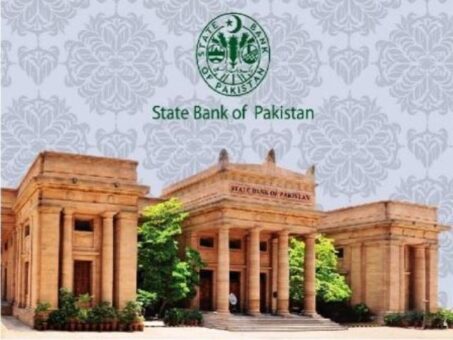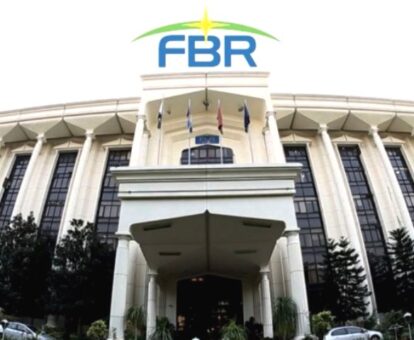Karachi, October 15, 2021: The State Bank of Pakistan (SBP) has issued the official exchange rates for Friday, October 15, 2021.
(more…)Tag: SBP
-

SBP issues coin to mark 70-year Pak-Germany relations
KARACHI: State Bank of Pakistan (SBP) on Thursday said that in order to mark the occasion of 70th anniversary of Pakistan-Germany Diplomatic relations, the Government of Pakistan has decided to issue a commemorative coin of even denomination, i.e. Rs.70.
(more…) -

KIBOR rates on October 14, 2021
KARACHI: State Bank of Pakistan (SBP) on Thursday issued the following Karachi Interbank Offered Rates (KIBOR) on October 14, 2021.
Tenor BID OFFER 1 – Week 7.20 7.70 2 – Week 7.25 7.75 1 – Month 7.29 7.79 3 – Month 7.71 7.96 6 – Month 8.08 8.33 9 – Month 8.37 8.87 1 – Year 8.60 9.10 -

Facilitating return filing: IR offices to work late hours
For facilitating return filing, the Federal Board of Revenue (FBR) has directed the offices of Inland Revenue (IR) to work late hours. The offices will remain open until 12:00 midnight on October 15, 2021, to accommodate individuals and businesses in their efforts to fulfill their tax obligations.
(more…) -

SBP issues customers exchange rates for October 14
Karachi, October 14, 2021: The State Bank of Pakistan (SBP) has released the official exchange rates for Thursday, October 14, 2021.
(more…) -

KIBOR rates on October 13, 2021
KARACHI: State Bank of Pakistan (SBP) on Wednesday issued the following Karachi Interbank Offered Rates (KIBOR) on October 13, 2021.
Tenor BID OFFER 1 – Week 7.19 7.69 2 – Week 7.23 7.73 1 – Month 7.28 7.78 3 – Month 7.71 7.96 6 – Month 8.06 8.31 9 – Month 8.36 8.86 1 – Year 8.61 9.11 -

SBP issues customers exchange rates for October 13
Karachi, October 13, 2021 – The State Bank of Pakistan (SBP) has released the latest exchange rates for various foreign currencies against the Pakistani Rupee (PKR) on Wednesday, October 13, 2021.
(more…) -

KIBOR rates on October 12, 2021
KARACHI: State Bank of Pakistan (SBP) on Tuesday issued the following Karachi Interbank Offered Rates (KIBOR) on October 12, 2021.
Tenor BID OFFER 1 – Week 7.20 7.70 2 – Week 7.25 7.75 1 – Month 7.29 7.79 3 – Month 7.71 7.96 6 – Month 8.07 8.32 9 – Month 8.37 8.87 1 – Year 8.61 9.11 -

SBP issues customers exchange rates for October 12
Karachi, October 12, 2021: The State Bank of Pakistan (SBP) has issued the official exchange rates for Tuesday, October 12, 2021.
(more…) -

KIBOR rates on October 11, 2021
KARACHI: State Bank of Pakistan (SBP) on Monday issued the following Karachi Interbank Offered Rates (KIBOR) on October 11, 2021.
Tenor BID OFFER 1 – Week 7.21 7.71 2 – Week 7.25 7.75 1 – Month 7.29 7.79 3 – Month 7.71 7.96 6 – Month 8.06 8.31 9 – Month 8.36 8.86 1 – Year 8.61 9.11